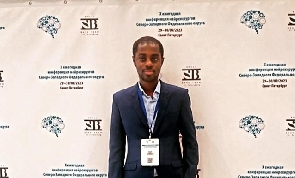It is imperative that medical professionals address the myths and worries around autism. Millions of people worldwide suffer from the complicated neurodevelopmental disorder known as autism spectrum disorder (ASD).
In order to foster greater knowledge and acceptance of autism, we will examine some often-asked questions concerning the disease and offer thorough responses in this article.
1. What is autism, and what are the symptoms? A developmental disease known as autism, sometimes known as autism spectrum disorder (ASD), impairs a person's capacity for social interaction and communication. It can show itself as a wide range of symptoms and behaviors, including difficulty interacting with others, repeated habits, and an intense concentration on one or two things. Due to the wide variation in symptom severity and combination among individuals with ASD, the disorder is frequently referred to as a "spectrum".
2. When do autism symptoms usually start to show? Autism symptoms can first appear in young children, usually by the time they are two or three years old. On the other hand, some kids might have symptoms early in life, while others might not have any symptoms at all until later in life. Effective support and therapy depend on early diagnosis and action.
3. Why does autism arise? Though research on the precise origin of autism is still underway, it is thought to be the result of a confluence of environmental and genetic variables. Although some genetic variables are involved, no single cause has been identified as being responsible for all cases of ASD.
The myth that vaccines cause autism has been thoroughly disproved by scientific study.
4. Can autism be treated? Although autism cannot be cured, people with the disorder can achieve great progress and enjoy happy lives with the right support and therapies. The objective is to assist people in improving their social, coping, and communication skills rather than to "cure" autism.
5. What therapies and interventions are available for people with autism? Autism treatment and intervention techniques are very customized and rely on the unique requirements and abilities of the individual. Behavioral therapies, speech and occupational therapy, and educational support are a few popular strategies. Additionally, doctors may prescribe medication to treat particular symptoms like aggression or anxiety.
6. Does autism co-occur with any other conditions? Indeed, a large number of people with autism may also have co-occurring disorders. These can include sensory processing issues, anxiety, depression, ADHD, and epilepsy. Addressing these co-occurring illnesses is critical to enhancing the general well-being of people with ASD.
7. How can we make society more accepting of people with autism? It takes awareness and acceptance to be inclusive. By raising awareness of autism, encouraging understanding, and offering suitable accommodations and support, society can encourage inclusion. Creating an inclusive workplace requires motivating businesses, schools, and communities to adjust to the requirements of people with autism.
8. What part do families and caregivers have in helping people with autism? Families and caregivers are extremely important in the lives of people with autism. Their understanding, advocacy, and support are essential to promoting the well-being of individuals with ASD. Families must look for information and get in touch with support groups in order to exchange knowledge and experiences.
In summary, autism is a multifaceted and intricate disorder that impacts people differently. By clearing up misunderstandings and raising awareness, we can encourage a more accepting community that values the special skills and potential of people with autism.
The greatest chances for success and happiness for those with ASD are contingent upon early diagnosis and management.
Opinions of Sunday, 5 November 2023
Columnist: Dr Simon Badu



















